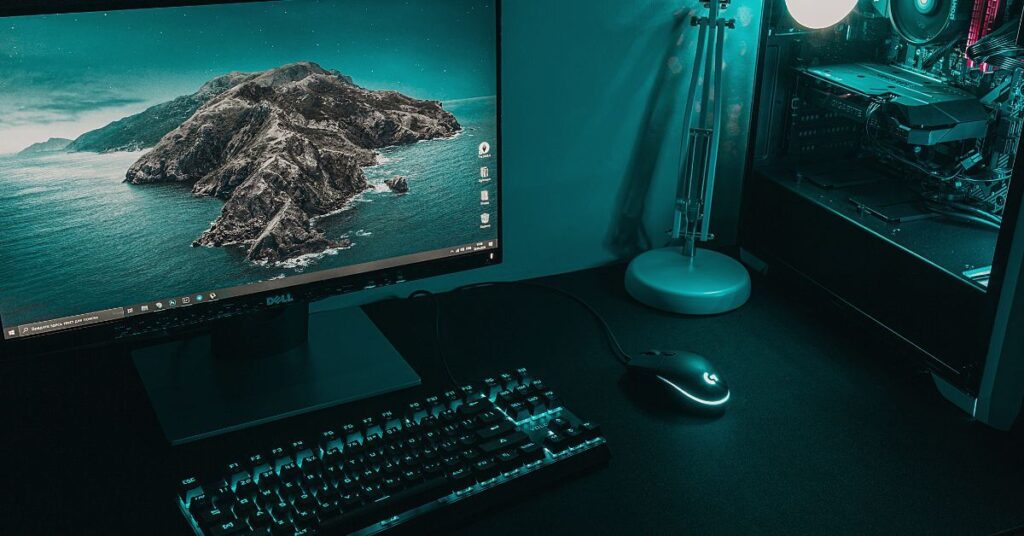In the heart of every computer system lies a critical component responsible for connecting and powering various hardware elements: the motherboard, often interchangeably referred to as the mainboard. While these terms are commonly used, there’s a subtle distinction between them that warrants exploration.
This post explores the subtle distinctions between “motherboard” and “mainboard,” unraveling their historical context, industry prevalence, and technical aspects. In the following table, we present a detailed comparison to shed light on the interchangeable yet distinct characteristics of these central circuit boards. “Motherboard vs Mainboard” emerges as a central theme, guiding our exploration of the seamless synergy between these essential hardware components.
| Feature | Motherboard | Mainboard |
|---|---|---|
| Definition | The main circuit board of a computer system | Another term used interchangeably with “motherboard” |
| Usage | Widely used in the computer industry | Less common in contemporary terminology |
| Components | Integrates various essential components, including CPU, RAM, GPU, storage connectors, and more | Same as “motherboard” |
| Functionality | Provides connectivity and communication between different hardware components | Same as the “motherboard” |
| Origin of Term | Historically used to describe the central circuit board containing the CPU, RAM, and other core components | Another term used historically for the same purpose |
| Industry Standard | Commonly used in the computer industry | Less commonly used in contemporary contexts |
| Interchangeability | Often used interchangeably with “mainboard” | Often used interchangeably with “motherboard” |
| Technical Details | Refers to the physical and electrical design of the central circuit board | Same as the “motherboard” |
| Popularity | More widely recognized in general usage | Less commonly used in contemporary contexts |
| Manufacturers | Products referred to as motherboards are manufactured by various companies | Products referred to as mainboards are manufactured by various companies |
| Evolution | The term “motherboard” has evolved to encompass various form factors and features | The term “mainboard” is less commonly used in modern contexts and has been largely replaced by “motherboard” |

Table of Contents
Now it is time for a full Detailed Comparison
The Fundamental Components
Understanding the intricacies of computer systems requires familiarity with their fundamental components. At the core of this ecosystem is a critical player – the motherboard (or mainboard) – which serves as the nexus connecting the CPU, memory, storage, and other essential elements.
Significance of Motherboards/Mainboards
The motherboard is akin to the central nervous system, facilitating communication between diverse hardware components. It plays a pivotal role in dictating the system’s performance, scalability, and overall functionality.
How Does The Motherboard Affect Gaming Performance?
Also, read this informative article for your computer.
Understanding the Terms
Motherboard
- Historical Evolution: Tracing the evolution of the term “motherboard” and its historical context.
- Role and Significance: Delving into the critical functions and importance of the motherboard in a computer system.
Mainboard
- Origins and Usage: Unpacking the origins and usage of the term “mainboard” and its historical context.
- Distinguishing Features: Identifying the similarities and distinctions between mainboards and motherboards.
Components and Architecture
Motherboard Components
- CPU Socket: Examining the socket for the Central Processing Unit.
- Memory Slots: Exploring the slots for RAM modules.
- Expansion Slots: Understanding PCI and PCIe slots for additional components.
- I/O Ports: Analyzing the array of input/output ports.
- Power Distribution: Investigating power connectors and distribution across the motherboard.
Mainboard Components
- Shared Core Components: Identifying components common to both motherboards and mainboards.
- Unique Configurations: Exploring any components or configurations exclusive to mainboards.
Technical Specifications
Motherboard Technical Specifications
- Form Factors: Analyzing popular form factors like ATX, Micro-ATX, and Mini-ITX.
- Chipset Compatibility: Understanding compatibility with different processors.
- RAM Capacity: Assessing the capacity and supported frequencies.
- Graphics Support: Exploring integrated graphics capabilities.
Mainboard Technical Specifications
- Form Factors in Mainboards: Examining form factors and their significance in mainboards.
- Specialized Features: Identifying any features exclusive to mainboards.
Functionality and Performance
Motherboard Functionality
- Communication Facilitation: Overview of how motherboards facilitate communication among components.
- Impact on Performance: Examining the motherboard’s influence on overall system performance.
Mainboard Functionality
- Contributions to Functionality: Analyzing how mainboards contribute to system functionality.
- Performance Differences: Identifying any performance variations compared to traditional motherboards.
Usage and Applications
Motherboards in Common Applications
- Desktop Computers: Discussing the role of motherboards in desktop computing.
- Laptops and Mobile Devices: Exploring their presence in portable computing devices.
Mainboards in Specialized Systems
- Industrial Applications: Examining the role of mainboards in industrial settings.
- Embedded Systems and IoT Devices: Unveiling their significance in the world of embedded systems and IoT devices.
Conclusion
In this exploration of the motherboard vs. mainboard debate, we hope to provide clarity for both tech enthusiasts and casual users alike, as we navigate the intricate landscape of computer hardware. Stay tuned for more insights into the ever-evolving world of technology.
